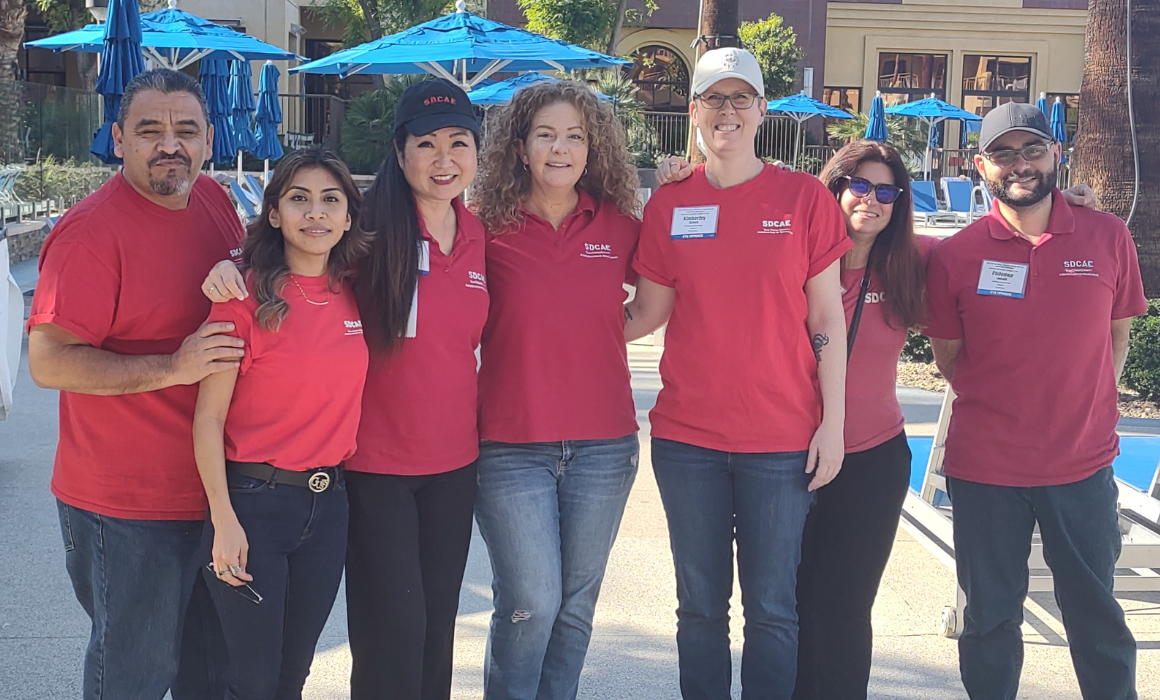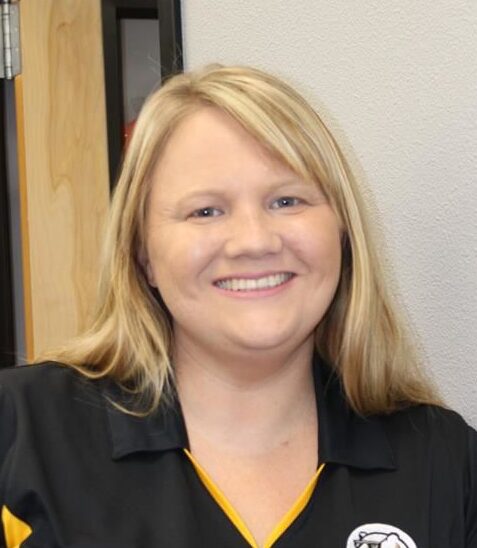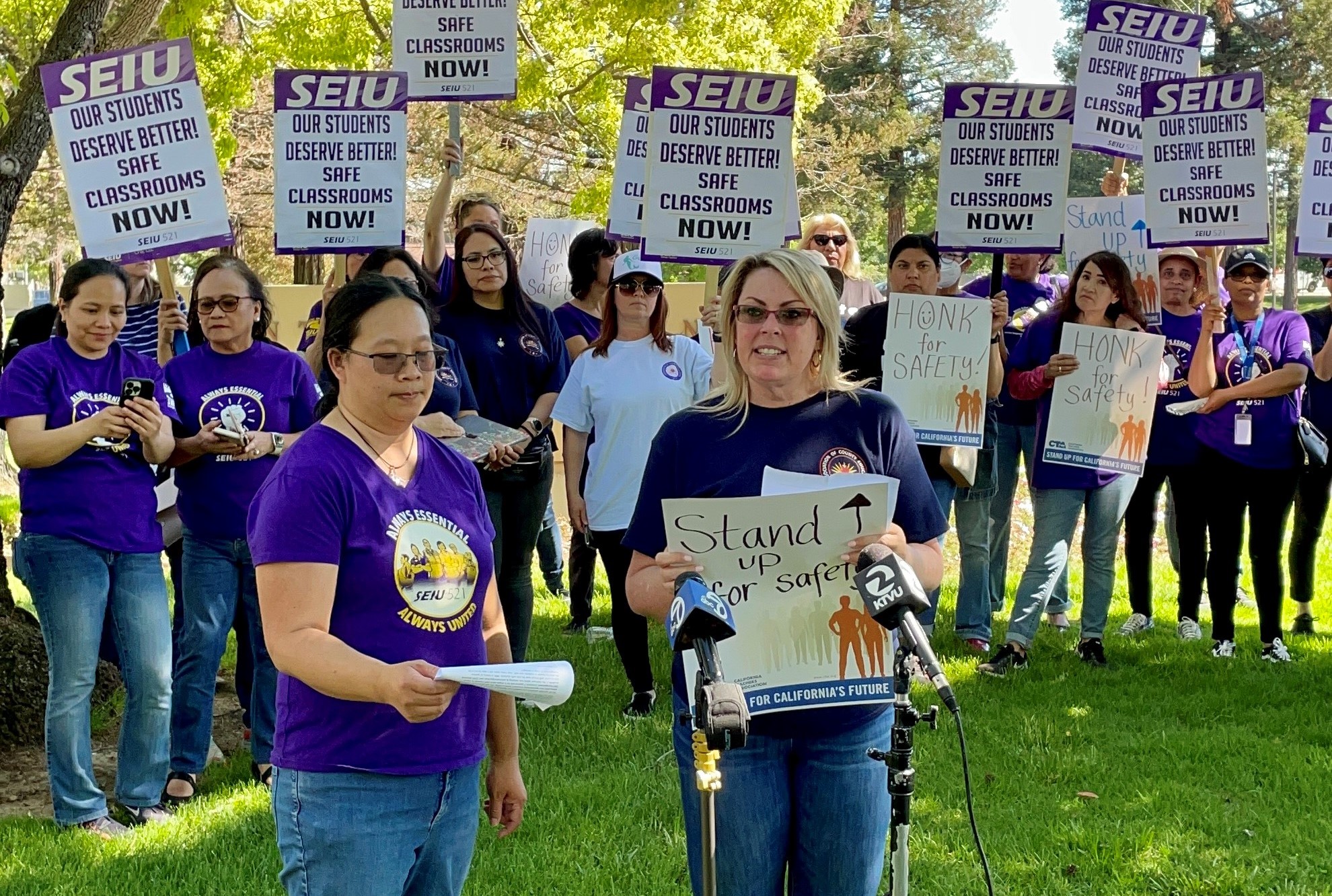
“We serve juvenile hall, we serve at risk youth, probation, career and technical education, moderate to severely disabled students, visually impaired students, — there are so many different programs” says resource teacher Shelby Rider, president of Yuba County Certificated Employees Association. “We work in the most difficult conditions and we teach the most vulnerable kids.”

Shelby Rider
California’s 58 county offices of education provide a support infrastructure to local school districts, approving district budgets and Local Control Accountability Plans, registering teacher credentials and developing programs to serve students with special needs throughout the county. These programs support students that local school districts often lack the resources or facilities to serve.
Steph Cruz has been working for San Diego County Office of Education (SDCOE) since 1996. The San Diego County Association of Educators (SDCAE) president says her members work in programs that specialize in a variety of student populations: the unhoused, foster youth, students on probation and incarcerated, expelled students, students with alternative living situations, migrant education, students who are deaf and hard of hearing, those who are visually impaired, and infants and toddlers. The focused nature of the work allows her more time to reach and teach her students.
“I’m not working with 200 kids. I’ve had classes with 20 kids that were self-contained,” she says. “A lot of educators in the county office never leave. We start here and retire here. I think so much of that has to do with a passion for serving the underserved.”
Staffing and safety
Working with these populations comes with specific safety concerns for each, Cruz says, such as the array of challenges that stem from working with students and families experiencing trauma in different educational settings.

Association of County Employees members rally for safety in Spring 2023.
Maintaining safe teaching and learning environments is a major priority for SDCAE — “it’s an equity issue,” Cruz says. The local recently collaborated with SDCOE as part of a joint safety team (contractually negotiated), members and working with management to develop recommendations to increase safety. Cruz says it’s been a positive experience.
“The county has done more than support us — they’ve been partners in this,” she says.
The experiences differ vastly based on the county office. Association of County Employees (ACE) members rallied earlier this year before a Santa Clara County Office of Education board meeting to call attention to injuries suffered by educators at the hands of students while on the job, ranging from bites and bruises to broken bones and busted teeth to wounds that required stitches. ACE President Tara Guerrero said during the Spring rally that educators do not blame their students for the injuries, calling them “a result of management’s failure to provide appropriate student-specific learning, training, support and resources including staff.”

Steph Cruz
ACE educators point to inadequate staffing as a major reason for ongoing unsafe teaching conditions. While the teacher shortage is impacting public schools nationwide, county offices endure specific challenges related to their relationship with local school districts that compound staffing problems. Rider says local school districts often believe they can better support students they have transferred to the county office and save money, leading to districts reclaiming these students — to the detriment of everyone involved.
“A lot of educators in the county office never leave. I think so much of that has to do with a passion for serving the underserved.”
— San Diego County Association of Educators President Steph Cruz
“It’s a nightmare and it really affects our moderate to severe special education students,” Rider says. “When districts take back, they look at numbers— they don’t understand the severity of disabilities and needs.”
Job security, local connections
This causes great turmoil in county offices, which often lay off educators when programs are transferred back to local school districts, causing folks to reconsider where they work.
“Everybody’s worried about the quality of care. The county provides specialized programs that serve multiple districts by sharing costs. It’s cheaper in the long-run to operate these programs through the county than the districts,” Rider says. “How do we get our members to stay at the Yuba County Office of Education when everything is in flux and members don’t know if their job will be there
next year?”
County educators’ local associations continue to organize and build power across the state to support their members, advocate for their students and fight for safe and equitable conditions — even when facing basic obstacles like distance. San Bernardino County is more than 20,000 square miles (the largest county in the nation) and while virtual meetings have helped to make distance less of an issue, there’s still no substitute for building together in person. Even at a fifth of the size, Cruz says the geography of San Diego County can be challenging.
“We try to have in-person events around the county and in multiple locations,” she says. County office local association leaders also meet regularly statewide and regionally to discuss their unique issues and collaborate on approaches. Cruz says that while they tend to be overlooked, county offices serve the most underserved students and have the greatest potential for impact. “If you send kids to us, they’re in good hands,” Cruz says.



The Discussion 0 comments Post a Comment